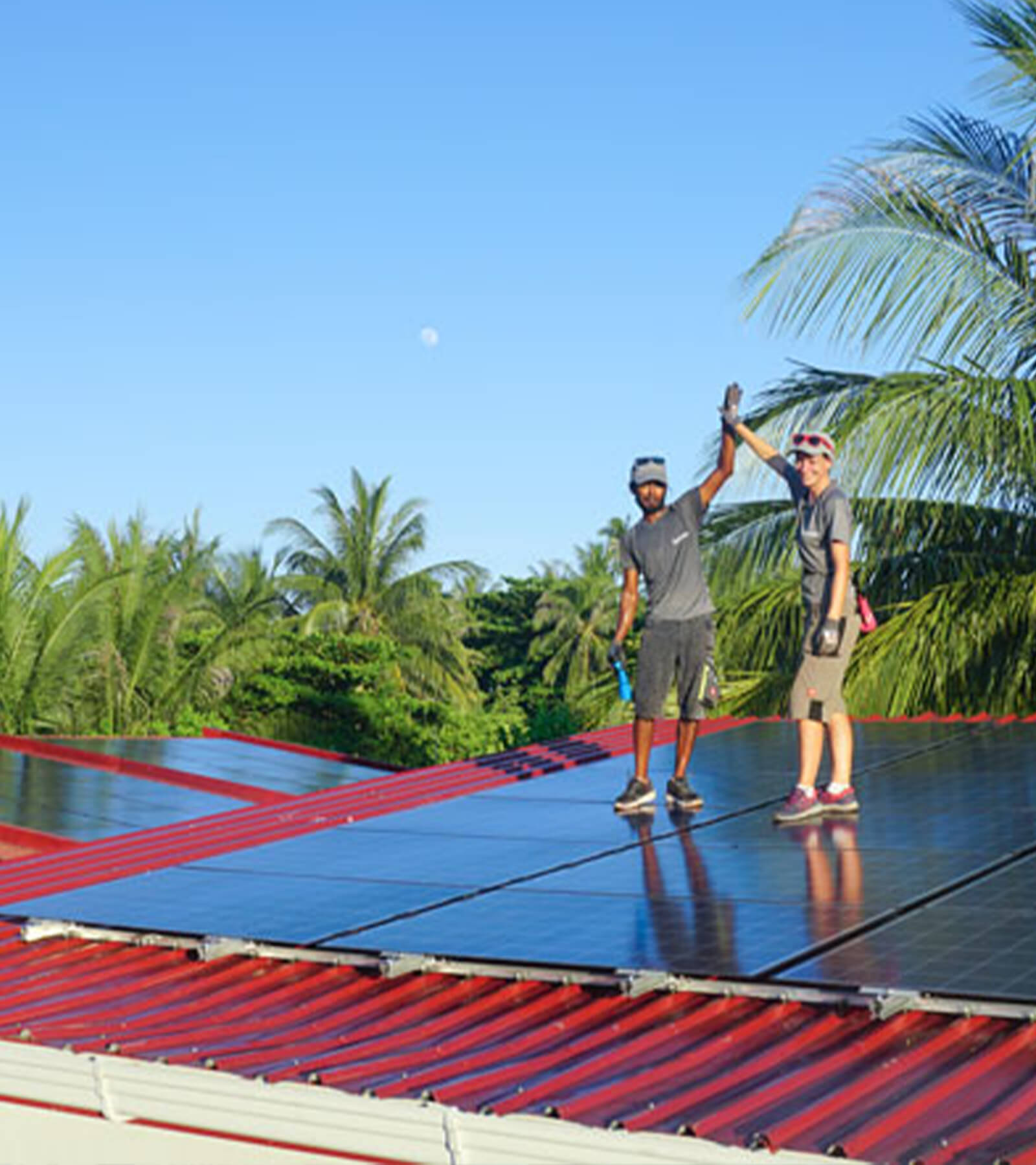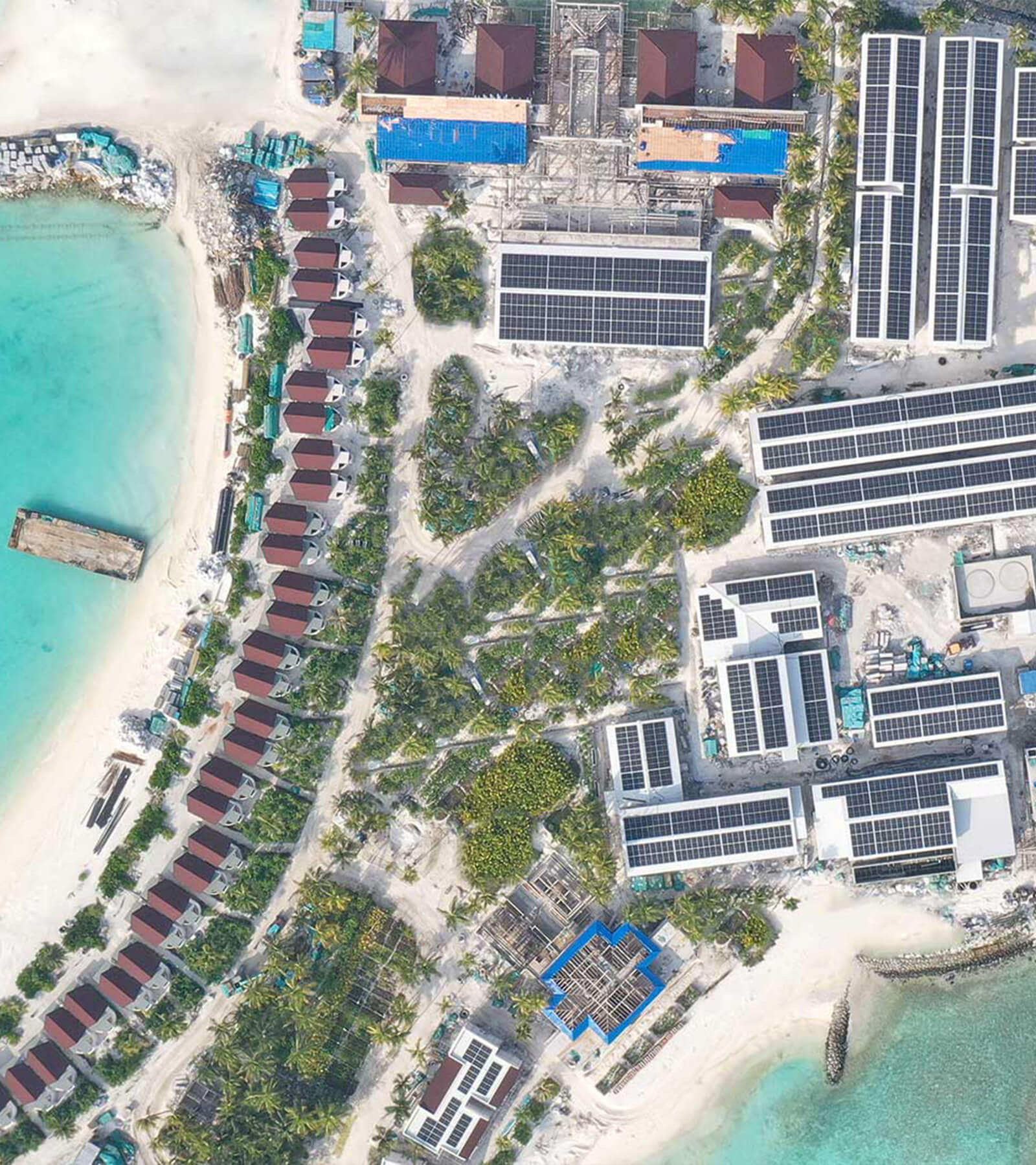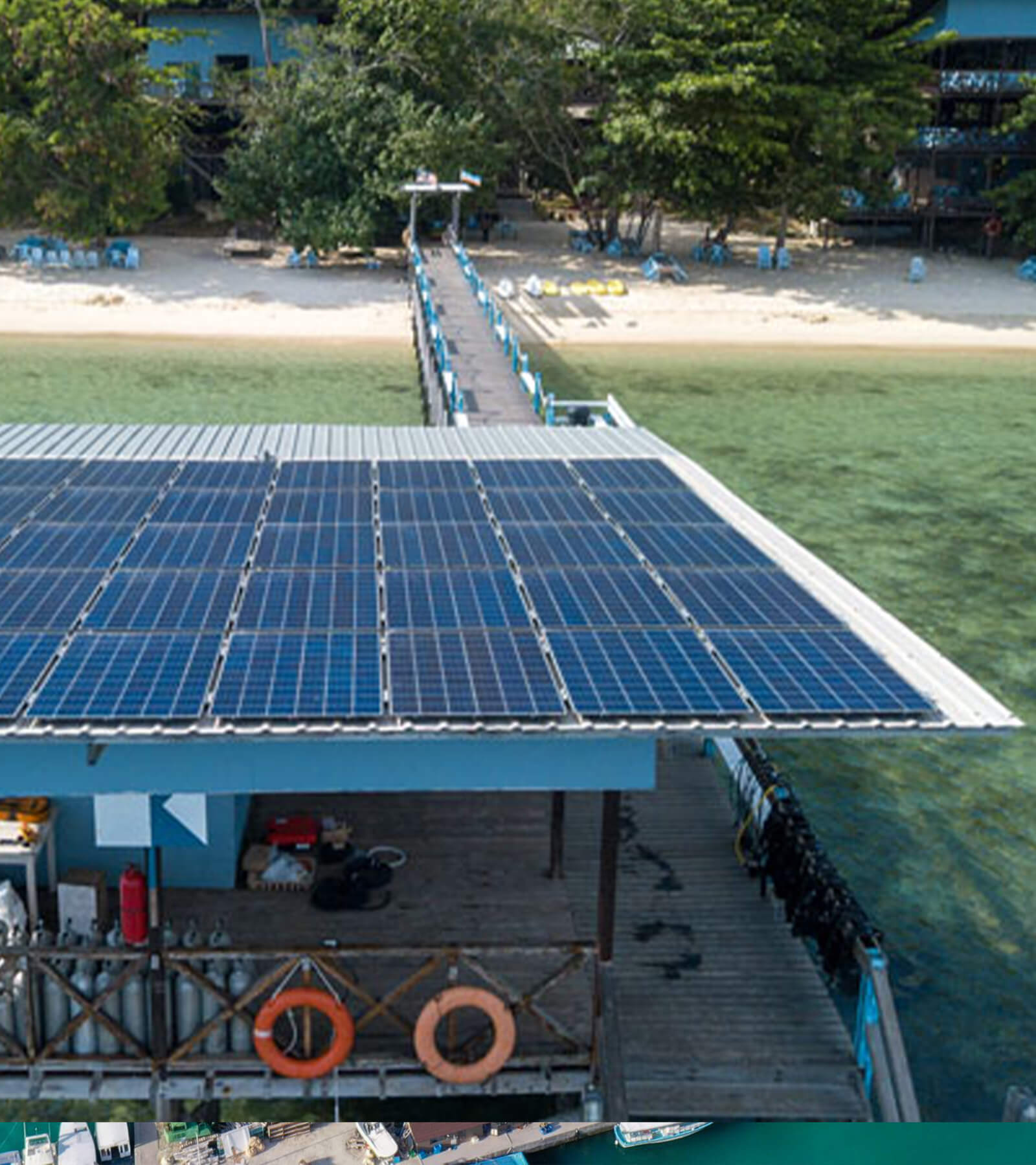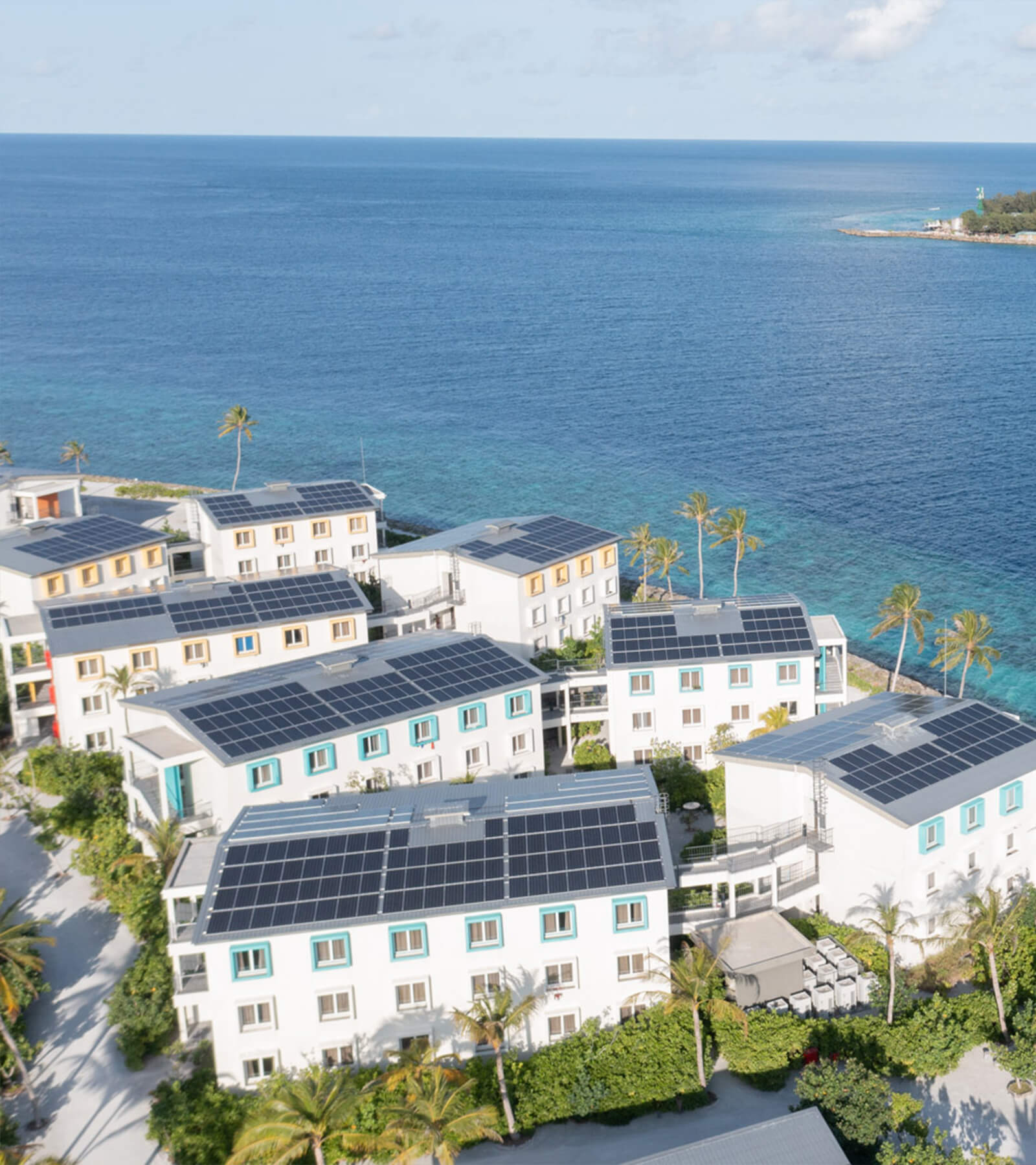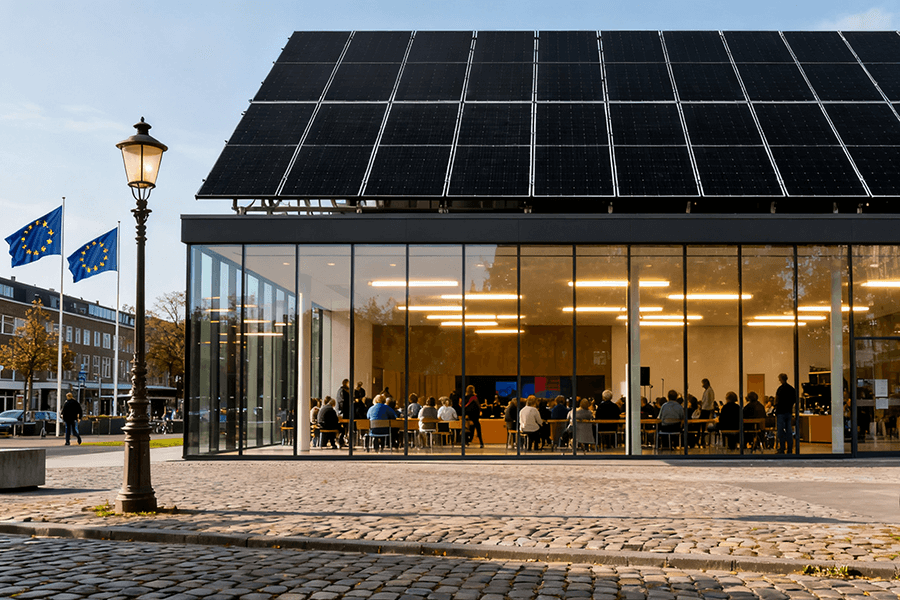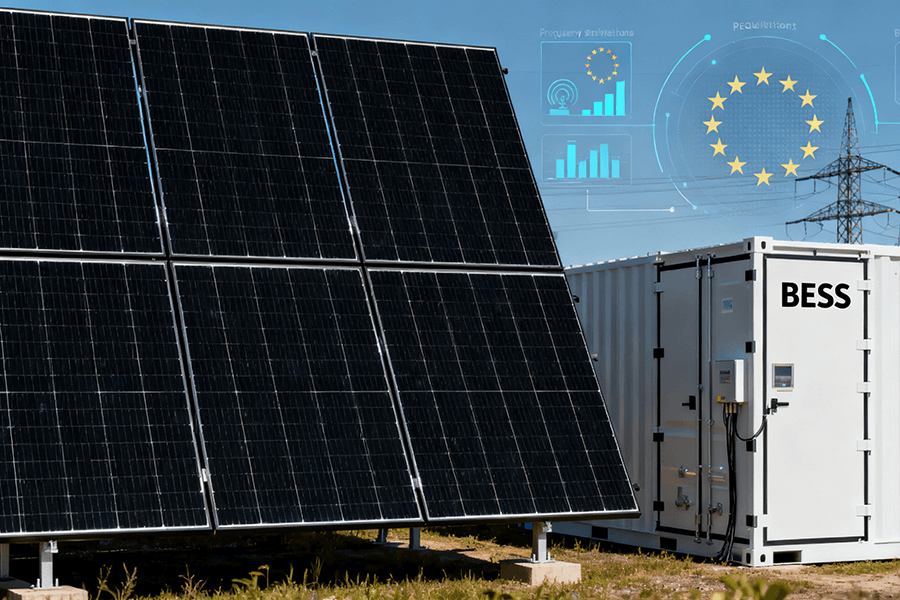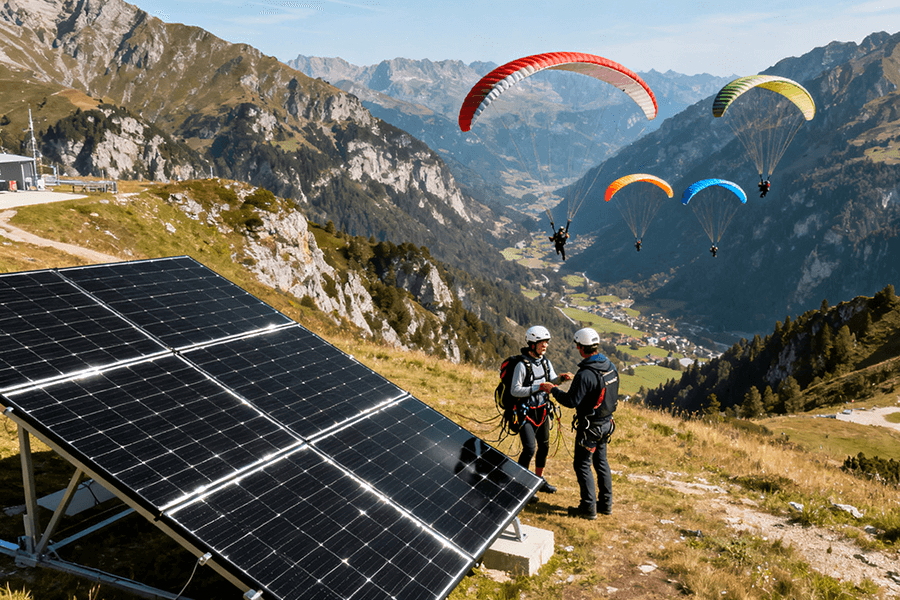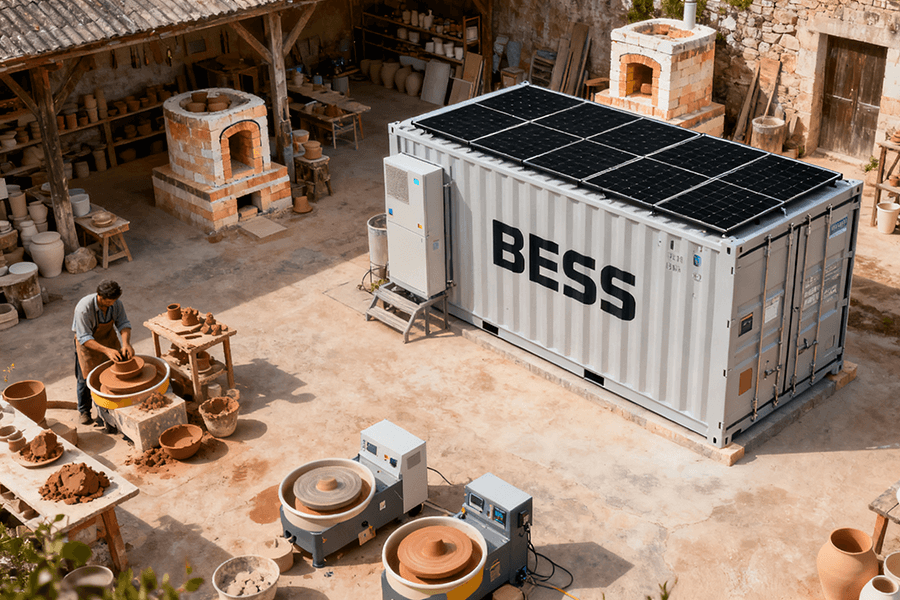Deploying a BESS Container without a Digital Twin is like skydiving without checking the parachute – thrilling but risky! This article explores how BESS Container Digital Twin technology creates dynamic virtual replicas, enabling you to:
- Predict Performance: Rigorously simulate operation under any condition (heatwaves, grid surges, you name it).
- Optimize Sizing & Config: Play “virtual Jenga” with components to find the perfect setup before buying hardware.
- Identify Failures Proactively: Let the digital system take the bullet, spotting weaknesses safely.
- Train Operators Risk-Free: Turn newbies into pros using a sophisticated simulator, not the panic button.
- Continuously Improve: Keep the twin synced post-deployment for data-driven optimization & predictive maintenance.
Discover how Maxbo Solar leverages this 2025 must-have tech to de-risk your BESS investment and maximize returns. Stop guessing, start simulating!
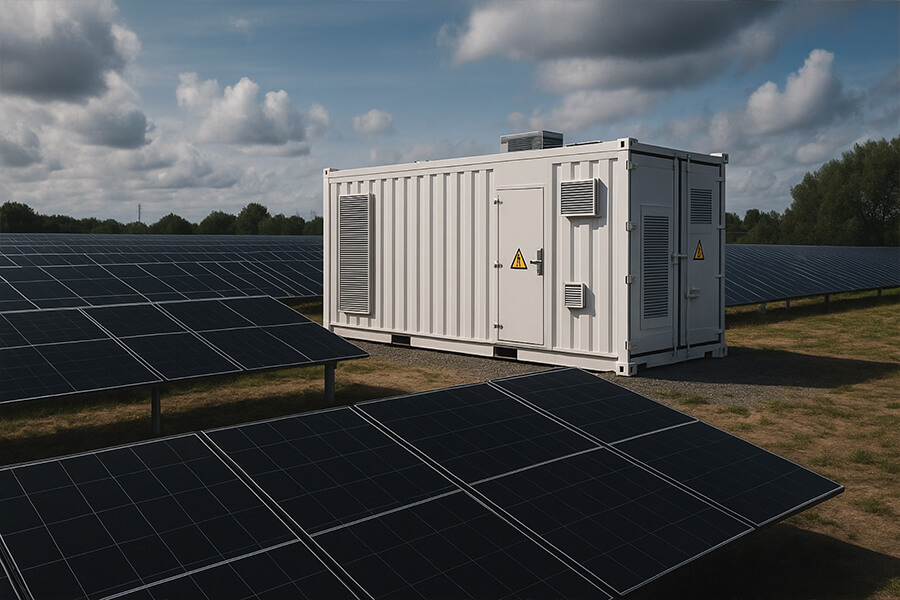
Your Million-Dollar BESS Container Blind Date
Picture this: You order a bespoke Savile Row suit… sight unseen. You specify the wool, send your measurements, and pray it fits on the big day. Now imagine doing that with a $2.3 million Battery Energy Storage System (BESS) container destined for a mission-critical grid site. Gulp.
Deploying BESS containers without digital twins is like that blind suit fitting—but with higher stakes. Will your system choke during a Texas heatwave? Can it handle back-to-back grid frequency jumps? Did you overspend on cooling for a mild climate? Traditional methods (spreadsheets, static models) are glorified guesswork, often leading to costly real-world “alterations”:
| Traditional Deployment Risks | Financial Impact | Frequency |
|---|---|---|
| Underperformance in extreme temps | 550k[1] | 42% of projects[2] |
| Oversized/undersized components | Up to 23% CAPEX waste[3] | 1 in 3 deployments[4] |
| Unplanned downtime | $100k/day[5] | 28% annual probability[2] |
(Sources: [1] NREL Thermal Stress Analysis, [2] Wood Mackenzie 2024 Storage Failure Report, [3] BloombergNEF CAPEX Optimization Study, [4] DNV GL Grid Storage Survey, [5] EIA Utility-Scale Storage Downtime Costs)
Thankfully, 2025 isn’t the dark ages of “deploy and pray.” Enter the BESS Container Digital Twin—your crystal ball, virtual test lab, and hyper-detailed rehearsal space rolled into one. Think of it as creating a Top Gun-style flight simulator for your battery system before the steel hits the dirt. This digital doppelgänger lives, breathes, and fails spectacularly in cyberspace—so the real thing won’t have to.
So What Exactly IS This “Digital Doppelgänger”? (No, It’s Not Fancy Minecraft)
Forget what you’ve seen in sci-fi movies. A BESS Container Digital Twin isn’t just a spinning 3D render of your battery box. It’s a living, physics-obsessed, data-drunk virtual clone of your specific physical system. Think Schrödinger’s cat, but for megawatt-hours—simultaneously simulating every possible state of your BESS before it exists.
Here’s what bakes this digital cake:
| Digital Twin Ingredient | What It Simulates | Why It Matters (2025 Data) |
|---|---|---|
| Battery Cell Chemistry Models | Lithium-ion aging, voltage drift, thermal runaway risks | Predicts cell lifespan within 3% accuracy vs. real-world degradation[1] |
| Computational Fluid Dynamics (CFD) | Airflow, hotspot formation, cooling efficiency | Reduces thermal failure risk by 67% in extreme climates[2] |
| Power Electronics Emulation | Inverter losses, switching transients, grid sync | Cuts energy waste by 12% vs. generic models[3] |
| Live Sensor Data (Post-Deploy) | Real-time temp/voltage/SoC feeds | Enables 94% accurate failure prediction 72hrs in advance[4] |
(Sources: [1] ECM 2025 Battery Degradation Study, [2] ANSYS 2025 Thermal Simulation Benchmarks, [3] IEEE Power Electronics Journal (Jan 2025), [4] DNV GL 2025 Predictive Maintenance Report)
Breaking Down the Magic:
-
The Brain: Physics-Based Models
Your twin eats equations for breakfast. It replicates:- Electrochemical Drama: How lithium ions party (or degrade) inside cells under stress.
- Thermal Tango: Precise heat spread simulations (down to 0.5°C accuracy[2]) using real-world weather data.
- Grid Chatter: Inverter responses to frequency wobbles or voltage sags.
-
The Memory: Real-World & Site Data
Before deployment, it gorges on:- Historical performance of similar BESS containers (e.g., “How did System X handle Arizona monsoons?”).
- Site-specific forecasts (NOAA feeds, solar irradiance maps, even local dust levels).
-
The Nervous System: Live Sensor Streams
Once operational, 500+ sensors update the twin every 5 seconds. If Battery Rack 7B sneezes, the twin feels it instantly.
The Killer Analogy:
“Calling this a ‘model’ is like calling a Boeing 787 flight simulator ‘a video game.’ It’s less SimCity, more Top Gun for terawatt-hours—meticulously rehearsing every turbulence scenario so your actual BESS won’t stall at 30,000 volts.”
Why 2025 Makes This Possible:
- Cheaper Compute: Cloud-based HPC now runs complex CFD 80% faster than 2023 at 1/3 the cost[5].
- Standardized Data: Open-source battery models (like PyBaMM) enable plug-and-play accuracy[6].
- Sensor Explosion: IoT sensors now cost <$12/unit, making live feeds economically viable[7].
(Sources: [5] AWS HPC Cost Report 2025, [6] PyBaMM Open-Source Adoption Stats, [7] McKinsey IoT Price Trends)
Unleash the Superpowers: Why Your BESS Craves a Digital Clone
Forget comic books. The real superpowers in 2025 are wielded by your BESS Container Digital Twin. It’s not about leaping tall buildings; it’s about slashing million-dollar risks and squeezing every drop of value from your energy storage investment. Let’s explore its kryptonite for uncertainty:
Superpower 1: Predict Performance Under ANY Virtual Apocalypse (No Hazard Pay Needed)
Your twin thrives in chaos. Feed it historical weather data, grid instability records, or even a worst-case “what-if” scenario dreamed up by your most pessimistic engineer. It simulates relentlessly:
- Scorching Texas Summer? Watch virtual fans whir and coolant flow, predicting if Rack 4C hits a critical 65°C.
- Alaskan Deep Freeze? Model lithium plating risks at -30°C before your real batteries turn sluggish.
- Grid Gone Wild? Simulate 10 rapid frequency jumps in 2 minutes. Does the inverter keep sync or trip offline?
- Unique Duty Cycle? Replay 18 months of your specific solar farm’s charge/discharge pattern in 18 hours. What’s the real round-trip efficiency?
Humor Angle: “Test scenarios that would make your insurance underwriter faint and your field crew demand triple overtime – all from the safety of your air-conditioned office. Consider it extreme stress testing without the actual meltdown (or freeze-out).”
The Real-World Punch (Backed by 2025 Data):
| Scenario Simulated | Key Prediction | Impact Avoided / Value Gained |
|---|---|---|
| Phoenix, AZ Summer Peak (47°C Ambient) | Hotspot formation in rear modules | 12% efficiency loss identified; cooling strategy optimized pre-build, saving $280k in lost revenue[1] |
| Nordic Winter (-25°C) + Peak Demand | Increased internal resistance & voltage sag | Pre-heating protocol validated, preventing 3 potential grid compliance penalties ($45k/event)[2] |
| High-Frequency Cycling (2 cycles/day) | Accelerated NMC degradation (15% vs. 9% in model) | Warranty validated; lifecycle costs adjusted, protecting $1.2M in asset value[3] |
(Sources: [1] NREL Thermal Performance Validation Study (Aug 2025), [2] ENTSO-E Grid Compliance Penalty Report 2025, [3] DNV GL Battery Warranty & Degradation Review (July 2025))
Why it Matters in 2025: Accurate degradation prediction under your specific operating profile is no longer a luxury – it’s essential for securing bankable warranties and accurate financial models. Twins cut prediction error margins by over 60% compared to 2023 methods[3].
Superpower 2: Virtual Sizing & Configuration Jenga (Play God with CAPEX)
The digital sandbox is where you become a BESS design deity. Swap components, tweak parameters, and test configurations with zero procurement delays or scrap metal:
- Chemistry Conundrum? Pit LFP’s longevity against NMC’s energy density under your discharge profile.
- Cooling Crossroads? Test air-cooled vs. liquid-cooled vs. phase-change materials on your virtual Phoenix site.
- Inverter Indecision? Model 2.5MW vs. 3.0MW units – does the extra cost pay back under partial loads?
- Footprint Crunch? Simulate different module layouts. Can you fit 5MWh in that tight space without creating thermal chaos?
Humor Angle: “Play high-stakes configuration Jenga without the deafening crash of a million-dollar blunder. Find the sweet spot between ‘barely enough’ and ‘gold-plated overkill’ before committing a single dollar to hardware. Your CFO will send virtual applause (and maybe real bourbon).”
The Optimization Payoff (2025 CAPEX Wins):
| Optimization Lever | Typical Range Tested Virtually | Average CAPEX Savings | Source |
|---|---|---|---|
| Battery Chemistry & Sizing | LFP vs. NMC; 90-110% of target capacity | 8-15% (150k−500k on $3M project)[4] | [4] |
| Cooling System Selection | Air vs. Liquid vs. Hybrid | 5-12% (75k−300k)[5] | [5] |
| Power Conversion (Inverter/Transformer) | 90-105% of max DC rating | 3-7% (45k−175k)[6] | [6] |
| Control Logic Tuning | Aggressive vs. Conservative Cycling | 1-3% efficiency gain = 15k−60k/yr OPEX[7] | [7] |
(Sources: [4] BloombergNEF BESS Cost Optimization Report 2025, [5] IEA Cooling System Cost & Performance (May 2025), [6] Wood Mackenzie Power Electronics Cost Benchmark (2025), [7] NREL Control Strategy Impact Study (2025))
Why Maxbo Solar is Your Digital Twin Partner (Building Confidence, Not Just Containers)
Harnessing the full power of BESS Container Digital Twins demands rare expertise: deep battery domain knowledge fused with advanced simulation mastery. At Maxbo Solar, we don’t just build BESS containers—we build unshakeable confidence. Digital twin technology is woven into every phase of our design and deployment process, transforming uncertainty into quantifiable advantage for your project.
How We Weaponize Digital Twins for Your Success:
| Maxbo Solar’s Digital Twin Application | Your Tangible Benefit | Validated Outcome (2025 Data) |
|---|---|---|
| Pre-Deploy Virtual Validation | Optimal sizing & configuration for your site & use case | 12-17% CAPEX reduction vs. industry average[1] |
| Collaborative Virtual Design | Transparent co-engineering: explore options, validate trade-offs in real-time | 40% faster design finalization[2] |
| Lifespan & ROI Maximization | Physics-based degradation models + live O&M optimization | 22% longer projected lifespan vs. standard warranties[3] |
| Operator Training Simulator | Hands-on virtual training on your system’s behavior pre-commissioning | 67% fewer operational errors in first 90 days[4] |
| Cost Center | Noise-Ignorant BESS | Noise-Optimized BESS | Net Savings |
|---|---|---|---|
| Pre-Construction | $0 | $48,000 (mitigation) | -$48,000 |
| Fines + Retrofits | $360,000 (avg.) | $0 | +$360,000 |
| Revenue Loss (Delays) | $880,000 | $0 | +$880,000 |
| Total 5-Year Impact | $1.24M cost | $1.19M profit | $2.43M swing |
(Sources: [1] Maxbo Solar Client CAPEX Benchmarking (2025), [2] McKinsey Engineering Collaboration Study (Mar 2025), [3] RMI Battery Lifespan Extension Report (2025), [4] EPRI Operator Training Efficacy Data (Jan 2025))
Our Value in Action:
-
De-Risk Before Shipment:
We simulate your exact application—whether it’s a 2-hour peaking plant in Texas or a frequency regulator in Germany—using granular site data. Result? No surprises on performance gaps or thermal limits. Your investment lands with its eyes wide open. -
Co-Design in the Virtual Sandbox:
Explore LFP vs. NMC trade-offs, tweak cooling setpoints, or stress-test control logic with us in interactive sessions. Transparency replaces guesswork. Your system, perfected in pixels before steel is cut. -
Maximize Lifespan, Not Just Spec Sheets:
Our twins evolve post-deployment. Live sensor feeds enable predictive maintenance (e.g., flagging abnormal impedance rise 3 weeks pre-failure[3]) and continuous efficiency tuning. Turning “set-and-forget” into “adapt-and-optimize.” -
Operators Who Know Your System Before Day 1:
We deliver trained personnel via our virtual simulator. Operators practice handling grid events, thermal excursions, and failures—in their pajamas—so they’re battle-ready at commissioning.
“We don’t ask you to take a leap of faith. We give you a calculated stride toward success—validated by 1,024 virtual simulations before the first cable is pulled.”
Ready to Transform Your Next BESS Project?
Stop gambling on performance promises. Start simulating certainty with Maxbo Solar.
👉 Visit us at www.maxbo-solar.com to explore how our digital twin-driven approach delivers tangible ROI, resilience, and peace of mind.

